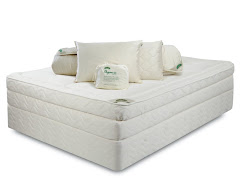So, to simplify things, go green in segments! Let's start at the top:
Pillows are treated heavily with polybrominated diphenyl ethers (PBDEs) or other brominated fire retardants, and, while that helps them not burst into flames, they can bio-accumulate in your body, and toxicological testing indicates those chemicals may cause liver toxicity, thyroid toxicity, and neurodevelopmental toxicity. Not something you want from the spot where you lay your head. Not in our Pillows!
Pillows also often harbor dust mites, and many people are allergic to their leavings, so finding hypo-allergenic options can also be beneficial for your health.
Now that you have had a chance to learn about some of the dangers that lurk beneath your head each night, we hope that you can find some healthy pillow alternatives.
Good first step! Next Post - we will talk about mattresses! So many options, which one do you need, and how do you know fact from fiction? In the next segment we will try and answer some of these question and present you with some healthy sleepsystem choices!
So Stay Tuned!
Need a little head start? Visit our site and sign up for our free monthly pillow drawing and you could win this incredibly green Natura Dream mate pillow on March 15th!









